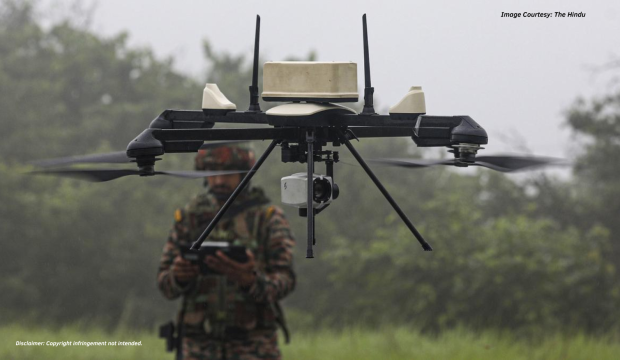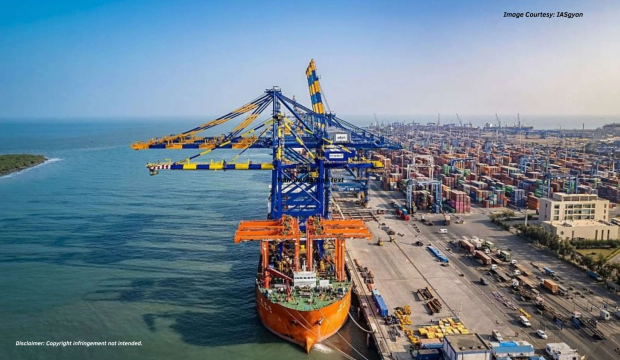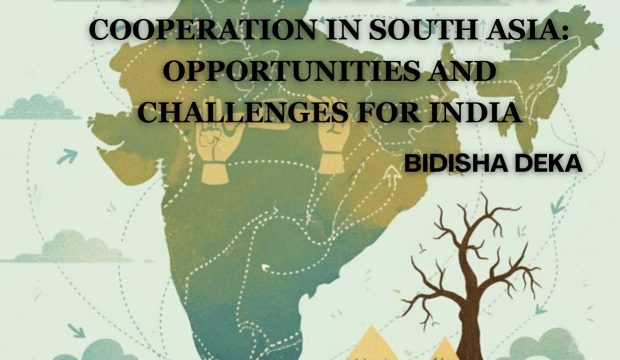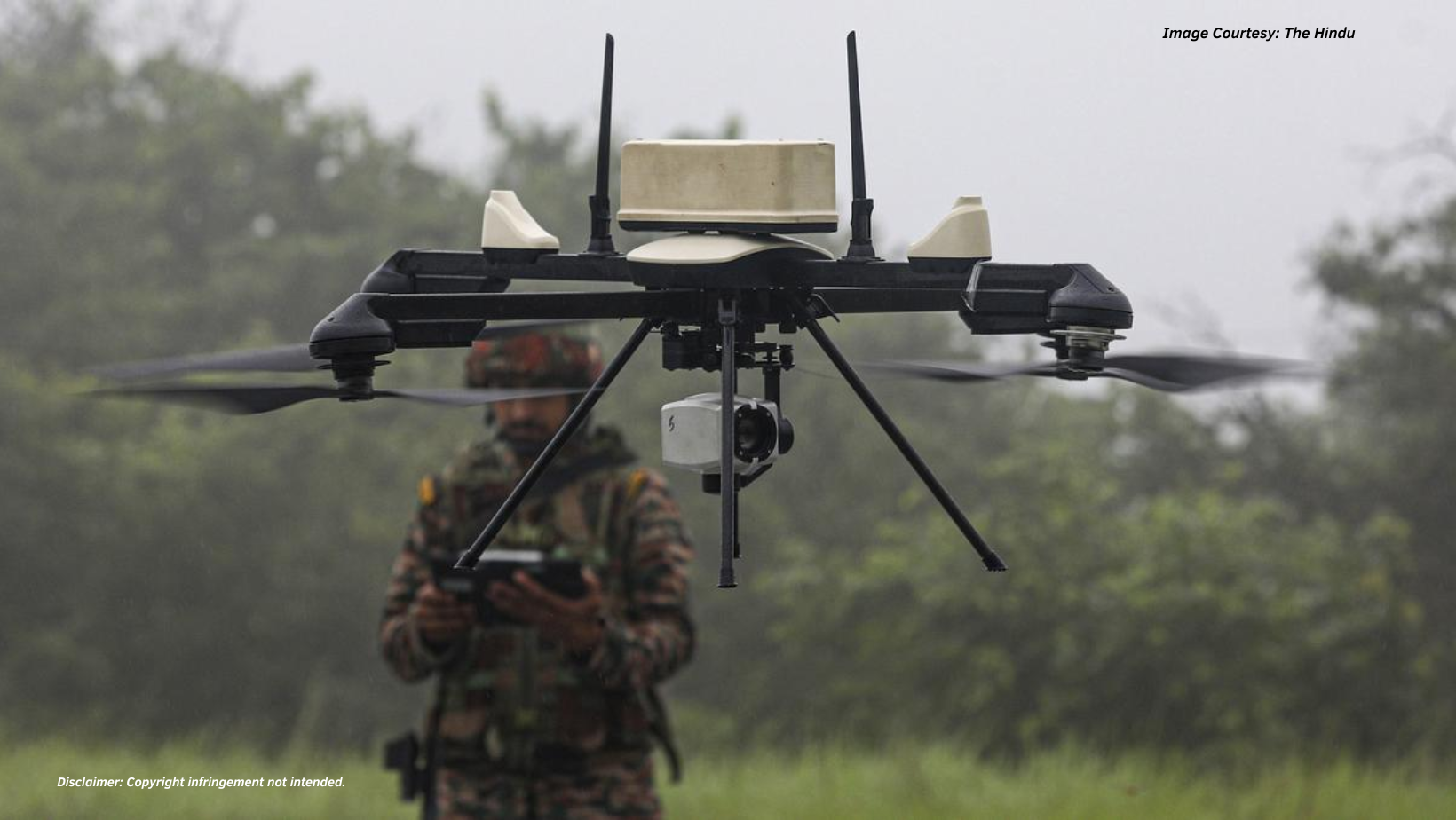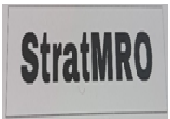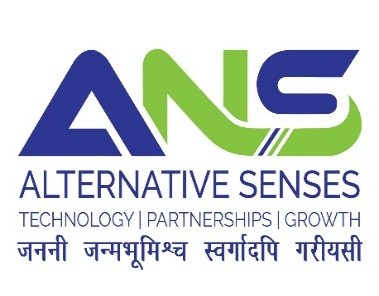Introduction
India and United States established Initiative on Critical and Emerging Technologies (iCET) for convergence on cutting edge technology in January 2023 to renew, elevate and expand their strategic partnership on leading technologies like artificial intelligence (AI), quantum technologies, advanced wireless, high-performance computing, space technologies, biotechnology and next generation telecommunications.[1] This collaboration on critical technologies will boost India-U.S. strategic partnership to advance while nurturing innovation and technological development for both defence and security requirements. This historic announcement signalled a new phase in India-U.S. technological cooperation, paving new ways to traverse in the domain of technological cooperation. The Indian Ministry of External Affairs stated that the framework would also incorporate biotechnology, critical minerals and rare earth processing technologies, digital trust and digital public infrastructure, and advanced materials.[2] Through this collaborative process, iCET has been dynamic in nature, encompassing new and emerging technologies, and ensuring that both India and the U.S. maintain their competitive edge.
The ecosystem of iCET emerged from the efforts of decades. Over time, both New Delhi and Washington have nurtured a trust-and-comfort relationship that has created space for this new initiative to flourish. Through iCET, India and the U.S. are reinforcing their strategic engagement and simultaneously preparing the groundwork for a democratic and humane approach to the future of technological innovation and development.[3] From the US strategic perspective, the origin of iCET can be traced to the Indo-Pacific strategy that the Obama administration had promulgated in response to an increasingly assertive China and revanchism shown under the leadership of President Xi Jinping.[4] By placing India as a key pillar of its strategy in the Indo-Pacific, the U.S. has underscored technological cooperation as a key aspect of its alliances in the region. In many ways, this U.S. approach to collaboration in emerging technologies with Indian public and private sector entities echoes the initial phase of China- U.S. technological cooperation that began in 1979.[5] The striking similarity can be drawn from between this agreement as iCET where US strategic requirements demands more alignment with Indias’s interest which can benefit in keeping eye on the rising China.
The major step in Indo – US technological cooperation was adoption of General Security of Military Information Agreement (GSOMIA) signed in 2002 which facilitated sharing of military intelligence between two countries.[6] It was fortified through series of significant bilateral agreements such as the Logistics Exchange Memorandum of Agreement (LEMOA), Communications Compatibility and Security Agreement (COMCASA), and the Basic Exchange and Cooperation Agreement (BECA) which laid the groundwork for deeper strategic and defence collaborations.[7] The Defence Technology and Trade Initiative (DTTI) could be considered as precursor of the iCET where both countries agreed for by reducing bureaucratic processes and legal requirements in all possible ways for smoother transaction of technology. Ambassador Taranjit Singh Sandhu has aptly termed iCET as “transformative,” comparing its significance to the landmark 2008 civil nuclear deal between India and the U.S.[8] On the similar lines, iCET is poised to drive substantial advancements in technology and defence, leveraging the collective strengths of both nations. Further, By maintaining diversity vertically, it brings together diverse stakeholders, including academia, universities, and the private sector to ensure a comprehensive approach to innovation and development.[9]
Developments of iCET
One of the important objectives of the iCET is to cultivate resilient and secure technology ecosystems and value chains.[10] With the plans to host workshops strengthening ties across industry, academia, and other key stakeholders, a regular monitoring group was established to setup high-tech trade and technology partnerships forward. Prime Minister Narendra Modi’s state visit to Washington in June, last year marked a significant milestone in bilateral defence collaboration. The visit yielded groundbreaking defence deals, notably the bilateral co-production agreement for F-414 jet engines. This deal includes an impressive 80 percent technology transfer, a landmark step toward bolstering India’s indigenous aircraft manufacturing capabilities. Additionally, India secured the supply of MQ-9B advanced drones, becoming the sole non-ally offered a Missile Technology Control Regime Category-1 Unmanned Aerial System.[11] These agreements underscore the depth of U.S. commitment to enhancing India’s defence capabilities and exemplify the strategic alignment between the two nations. Concurrently, the launch of the India-U.S. Defence Acceleration Ecosystem (INDUS-X) during the state visit signifies tangible progress in implementing iCET. INDUS-X aims to foster collaboration on defence technology design and production, laying a robust foundation for sustained innovation and partnership in critical and emerging technologies.[12]
These developments signal a promising trajectory for iCET and underscore the proactive efforts of both nations to advance strategic technological collaboration.
To make sure regular monitoring happens the first comprehensive midterm assessment of the India-US Initiative on Critical and Emerging Technologies iCET was conducted by Deputy NSAs Vikram Misri and Jonathan Finer. [13] However, the second meeting for review has been put off twice due to disturbances in global politics – first the war between Russia and Ukraine and later the Middle East crisis over Gaza.[14] These postponements suggest that iCET’s focus has been diluted within the bilateral agenda, necessitating a rejuvenation of priorities. Also addressing structural issues between the two nations is crucial at this moment for the effective functioning and advancement of the iCET initiative.
Hurdles in the U.S.-India Technological and Defence Cooperation
Export Control Restrictions
One obstacle to American-Indian technological cooperation in defence is strict export control laws in the United States, notably the International Traffic in Arms Regulations (ITAR).[15] These rules, which are enforced by the Directorate of Defence Trade Controls (DDTC) within the Department of State, regulate the export of defence services and articles and impose severe constraints on the handling of software and technical data listed on the United States Munitions List (USML).[16] Defence technology transfers struggle under ITAR enforcement as they need to involve critical military technologies aimed at checking China’s regional ambitions.
Legislative and Procedural Delays
Policy makers find it hard to make reliable decisions on technology transfer under ITAR because the criteria for getting mandatory licences are obstructive and there is little information on the denied licences.[17] Further, India is also barred by ITAR regulations from using its own intellectual property in jointly created ecosystems that utilise state-of-the-art integrated command and control systems, sensor fusion platforms with autonomy capabilities or advanced data analytics tools. However, even countries like Australia which are allies of US face similar challenges with ITAR restrictions thus indicating how stringent these rules can be and their impact on technological cooperation.[18]
Absence of a Comprehensive Framework
India has been faced with sluggish implementation of projects like DTTI, showing the need for an all-encompassing cooperation framework in terms of technology.[19] The iCET did not pick up because there was no coordination among concerned bodies especially the army and export officials from both sides. Such regulations result in procedural delays thereby adding more confusion to already difficult process.[20]
Preference for Arms Sales Over Technology Sharing
The U.S. administration would rather sell weapons than share important technology with countries that are not its allies this is also a significant restriction for the Indian government. Even though India has been designated as a Major Defence Partner (MDP)[21], it is still bound by strict regulations under the Arms Export Control Act (AECA) of 1976 and ITAR.[22] These conflicting interests make it difficult to transfer knowledge needed for building state-of-the-art systems like nuclear-powered submarines.[23] Consequently, such an approach has hampered progress in bilateral defence cooperation within the framework of iCET.
Regulatory Hurdles and Administrative Delays
From an Indian perspective, the regulatory structure acts as a barrier towards effective joint technological ventures. While Defence Acquisition Procedure has been rationalised, there are still delays in procurement due to mismatch between acquisition plans and budgetary provisions. Additionally, American companies fear that their timely offset credits will not be honoured because of excessive red-tapism in India which could lead to severe penalties being imposed on them.[24] These administrative challenges serve to undermine any collaborative initiative between both nations.
Strategic Divergences
Both India and United States differs in strategic objectives due to various geopolitical reasons. Since beginning India relied on Russian defence import and duly purchased S-400 defence system. To make way smoother for India, US gave waiver to India through CAATSA act of 2017.[25] With the invasion of Ukraine by Russia and an increase of oil purchases from Moscow, India’s relations with America have been strained.[26] [27]Also, It is difficult for Russian platforms which India purchased to be interoperable with American systems due to their technological incompatibility creating hurdles for Indian defence artillery to operate smoothly, resulting in increased expenditure.[28] The Pakistan dimension should not be sidelined as relations between India and U.S also depend on how much the U.S can go with Pakistan. A defence deal between US and Pakistan in 2016 led to tension as India protested against it and concerned over possible use of jets against India.[29] India made a strong statement that unless F-16s sale was stopped no more defence deals would be signed with US which means these strategic divergences act as stumbling blocks towards realising full potential for bilateral defence cooperation.[30]
Need for Enhanced Institutional Mechanisms
The India-U.S. Critical and Emerging Technologies Initiative (iCET) does not involve any financial backing, but instead relies upon institutional and political commitments. At present, there is no specific fund under iCET to support joint ventures, workshops or skill development programmes.[31] Establishing such a fund would enhance the actual operation of this initiative, thus making it more effective. The significance of data in technological progress cannot be overemphasised thus there should be mechanisms put in place to ensure smooth cross-border flows of data takes place. Furthermore, American tech giants are generally against data localisation which creates another area of conflict that needs to be resolved.[32]
Way Forward
Export Control Flexibility
Washington needs to think about revising ITAR regulations so as to allow for easier transfer of technology with trusted partners like India. To deal with this matter, they can create a bilateral agreement specifically designed to expedite and simplify the licensing process for critical technologies.
Enhanced Transparency and Coordination
Enhanced transparency and better data sharing related to license applications and denials can help in streamlining the process. Both nations could also setup a joint task force to inscribe specific procedural delays and enhance coordination between their respective defence and export control agencies.
Comprehensive Technical Cooperation Framework
Putting in a place comprehensive, overarching framework for technical cooperation that includes clear guidelines, timelines, and coordination mechanisms between the respective agencies can help accelerate project implementation. Regular high-level meetings and a dedicated secretariat could strengthen coordination and settle issues promptly.
Balanced Approach to Technology Sharing
The U.S. should contemplate a more balanced approach that includes technology sharing along with arms sales. Developing joint research and development programs and technology transfer agreements can help meet India’s aspirations and reinforce the defence partnership.
Streamlined Acquisition and Offset Credits
India could further refine its Defence Acquisition Procedure to make sure better synergy between procurement plans and budgetary allocations. There is need for speeding up the procedures like permitting offset credits and lowering bureaucratic hurdles which can be done by establishment of a fast-track mechanism that would enhance cooperation with U.S. firms.
Continuous Dialogue on Strategic Divergences
Due to multiple stakes at multiple geopolitical conflicts, the strategic divergence between two countries has remained major issue. There is need to take trust building initiatives through transparency in defence dealings and seeking innovative and out of the box ways to enhance interoperability of the devices despite different equipment origins can overcome these challenges.
Dedicated iCET Fund and Data Flow Pathways
The monetary support mechanism needs to be strengthened which can be done by setting up a dedicated iCET fund which could support not only collaborative projects and but take into consideration human capital development. Additionally, data flow and localization need to take place in smoother way which can be done through adoption of explicit guidelines for data transmission beyond borders. This guideline should consider data sovereignty, also concerns related to security and privacy for seamless flow of information across borders to settle disputes related to data localisation.
Conclusion
The obstacles are inevitable between the US India cooperative measures considering the burden of the history and many operational challenges. Still the US-India Critical and Emerging Technologies Initiative (iCET) is a major breakthrough in technological collaboration and defence partnership between the two countries where the hierarchy of client patron relationship has been withered to support engagement at equal position. The cruciality of cutting edge technology cannot be ignored in the upcoming geopolitics this initiative lays the foundation for effective collaboration in innovation and strategic affairs. To sum up, export controls, procedural delays and regulatory obstacles are prevalent in the bilateral cooperation where institutional, legal and monetary reforms should be taken into considerations by the higher authority of the both sides. The broad-based nature of the initiative’s expansion into biotechnology, critical minerals, and advanced materials emphasises its flexibility. As New Delhi and Washington advance this partnership, they are not only building up their own technological and defence capabilities but also establishing a model of global technological management based on democracy and humanism. If they manage to deal with their strategic differences and organise the alignment of priorities through collaboration, the U.S. and India can unlock the full potential of iCET which will result in significant technological and defence improvements beneficial for both countries as well as reinforcement of common democratic values.
DISCLAIMER
The paper is author’s individual scholastic articulation and does not necessarily reflect the views of CENJOWS. The author certifies that the article is original in content, unpublished and it has not been submitted for publication/ web upload elsewhere and that the facts and figures quoted are duly referenced, as needed and are believed to be correct.
References
The White House (2023), “United States and India Elevate Strategic Partnership with the initiative on Critical and Emerging Technology (iCET)”, FACT SHEET
https://www.whitehouse.gov/briefing-room/statements-releases/2023/01/31/fact-sheet-united-states-and-india-elevate-strategic-partnership-with-the-initiative-on-critical-and-emerging-technology-icet/
Joint Statement: Fifth Annual India-U.S. 2+2 Ministerial Dialogue, Media Centre, Ministry of External Affairs Website, Government of India, 10 November 2023.
https://www.mea.gov.in/bilateral-documents.htm?dtl/37252/Joint_Statement_Fifth_#:~:text=The%20Ministers%20welcomed%20the%20rapid,in%20New%20Delhi%20in%20earlyThe White House, “United States and India Elevate Strategic Partnership with the initiative on Critical and Emerging Technology (iCET)”
https://www.whitehouse.gov/briefing-room/statements-releases/2023/01/31/fact-sheet-united-states-and-india-elevate-strategic-partnership-with-the-initiative-on-critical-and-emerging-technology-icet/The White House (2022), “Indo Pacific Strategy of the United States”,
https://whitehouse.gov/wp-content/uploads/2022/02/U.S.-Indo-Pacific-Strategy.pdf
Konark Bhandari, “Forging a High-Technology Partnership Between the United States and India in the Age of Export Controls”, Carnegie Endowment for International Peace, 7 March 2023.
https://carnegieendowment.org/research/2023/04/forging-a-high-technology-partnership-between-the-united-states-and-india-in-the-age-of-export-controls?lang=en
“Agreement Between United States of America and India,” US Department of states, United States Of America, 17 January 2002.
https://www.state.gov/wp-content/uploads/2019/04/02-117-India-Defense-GSOIA-1.17.2002.pdfManoj Joshi, “Building up American Connection”, ORF Online, 28 October 2020.
https://www.orfonline.org/expert-speak/building-upon-the-american-connection
Prashant Jha, “ICET: The next big thing in the India-US strategic relationship is here”, Hindustan Times, 1 February 2023.
https://www.hindustantimes.com/india-news/icet-the-next-big-thing-in-the-india-us-strategic-relationship-is-here-101675104782728.htmlChaudhary et al, “The U.S.-India Initiative on Critical and Emerging Technology (iCET): The Way Forward”, Carnegie Endowment for International Peace, 24 January 2023.
https://carnegieendowment.org/research/2023/01/the-us-india-initiative-on-critical-and-emerging-technology-icet-the-way-forward?lang=enThe White House, “United States and India Elevate Strategic Partnership with the initiative on Critical and Emerging Technology (iCET)”. https://www.whitehouse.gov/briefing-room/statements-releases/2023/01/31/fact-sheet-united-states-and-india-elevate-strategic-partnership-with-the-initiative-on-critical-and-emerging-technology-icet/
“India-USA Joint Statement during the Official State visit of Prime Minister, Shri Narendra Modi to USA”, Media Centre, Ministry of External Affairs, Govenment of India, 23 June 2023.
https://www.mea.gov.in/bilateral-documents.htm?dtl/36711/IndiaUSA+Joint+Statement+during+the+Official+State+visit+of+Prime+Minister+Shri+Narendra+Modi+to+USA#:~:text=Prime%20Minister%20Modi%20and%20President,milestone%20in%20India%2DU.S%20relations.“INDUS X factsheet released for operationalising the ‘Defence Innovation Bridge’ under Initiative on Critical and Emerging Technologies (iCET)” Press Information Bureau, 22 June 2023.
https://pib.gov.in/PressReleaseIframePage.aspx?PRID=1934311
“India, US conduct comprehensive review of iCET to pave way for enhanced collaboration”, The Print, 4 December 2023,
https://theprint.in/world/india-us-conduct-comprehensive-review-of-icet-to-pave-way-for-enhanced-collaboration/1871739/Suhasini Haider, “As Iran-Israel ramp up tensions, U.S. NSA Sullivan puts off visit to India”, The Hindu, 16 April 2024
https://www.thehindu.com/news/national/us-nsa-jake-sullivan-postpones-visit-to-india-again/article68070679.eceAnil Ahuja, “One Year of India – US iCET: Looking Ahead”, Natstrat, February 2024
https://www.natstrat.org/articledetail/publications/one-year-of-india-us-icet-looking-ahead-114.html“An introduction to the ITAR and EAR”, Gan Integrity, Compliance reference,
https://www.ganintegrity.com/reference/itar-ear/#:~:text=As%20previously%20mentioned%2C%20the%20ITAR,twenty%2Done%20separate%20categories).- Export Licensing (ITAR and EAR), Department of Commerce, United States of America. https://www.bis.doc.gov/index.php/documents/technology-evaluation/781-export-licensing/file
“Ambitious plans for US-India defence technology sharing face hurdles”, The Economic Times, 23 June 2023.
https://economictimes.indiatimes.com/news/defence/ambitious-plans-for-us-india-defence-technology-sharing-face-hurdles/articleshow/101208500.cms?from=mdrLahu R Chaudhary, India’s Military Modernisation Efforts Under Prime Minister Modi, Stimson, 22 May 2024
https://www.stimson.org/2024/indias-military-modernization-efforts-under-prime-minister-modi/- Graham, Jefferey. “Building an Enduring U.S.-India Partnership to Secure a Free, Open, and Prosperous Indo-Pacific Region”, Joint Force Quarterly 107 https://ndupress.ndu.edu/JFQ/Joint-Force-Quarterly-107/Article/Article/3197210/building-an-enduring-us-india-partnership-to-secure-a-free-open-and-prosperous/
Samir Verma, “Strategic Convergence: The United States and India as Major Defence Partners”, ORF Online, 25 June 2019,
https://www.orfonline.org/research/strategic-convergence-the-united-states-and-india-as-major-defence-partnersCara Abercrombie, “Removing Barriers to U.S.-India Defense Trade”, Carnegie Endowment for International Peace, 10 January 2018.
https://carnegieendowment.org/research/2018/01/removing-barriers-to-us-india-defense-trade?lang=en¢er=globalElias Yousuf, ““If we don’t sell it, someone else will:” Dependence & Influence in US Arms Transfers”, Stimson, Trade and Technology, 20 March 2023.
https://www.stimson.org/2023/if-we-dont-sell-it-someone-else-will-dependence-influence-in-us-arms-transfers/- Araudra Singh, “Hurdles and Opportunities for the India-U.S. Defense Partnership”, Stimson, South Asia, 22 February 2024. https://carnegieendowment.org/research/2018/01/removing-barriers-to-us-india-defense-trade?lang=en
“US House approves CAATSA sanctions waiver to India for purchase of S-400 missile defence system from Russia”, The Economic Times, 15 July 2022
https://economictimes.indiatimes.com/news/defence/us-house-votes-for-india-specific-caatsa-waiver/articleshow/92890576.cms?from=mdrArathy Somashekhar, “Indian refiners buy more US crude as Russia sanctions tighten”, The Reuters, 26 March 2024.
https://www.reuters.com/markets/commodities/indian-refiners-buy-more-us-crude-russia-sanctions-tighten-2024-03-26/Elizabeth Threkeld, Pragmatism Prevails in US-India Ties Despite Ukraine Differences, Stimson, South Asia, 22 February 2024
https://www.stimson.org/2024/pragmatism-prevails-in-us-india-ties-despite-ukraine-differences/Erin Mello, “The Enduring Russian Impediment to U.S. – Indian Relations”, War on the Rocks, 13 February 2023.
https://warontherocks.com/2023/02/the-enduring-russian-impediment-to-u-s-indian-relations/“US congress blocking funds for the F-16 Purchase: Report”, The Dawn, 29 April 2016
https://www.dawn.com/news/1255209Suhasini Haider and Varghese K George, “India calls U.S. envoy, protests F-16 sale to Pakistan”, The Hindu, 13 February 2016
https://www.thehindu.com/news/national/US-sale-of-F-16s-to-Pakistan-India-expresses-disappointment-says-such-arms-transfers-will-help-combat-terrorism/article60585589.eceChaudhary et al, “The U.S.-India Initiative on Critical and Emerging Technology (iCET): The Way Forward”.
https://carnegieendowment.org/research/2023/01/the-us-india-initiative-on-critical-and-emerging-technology-icet-the-way-forward?lang=en¢er=globalAnirudh Burman and Upasana Sharma, “How Would Data Localisation Benefit India?”, Carnegie Endowment for International Peace, 14 April 2021.
https://carnegieendowment.org/research/2021/04/how-would-data-localization-benefit-india




